M Hopkinson
A new method for segmentation and analysis of bone callus in rodent fracture models using micro-CT
Hopkinson, M; Jones, G; Evans, L; Gohin, S; Magnusdottir, R; Salmon, P; Chenu, C; Meeson, R; Javaheri, B; Pitsillides, AA
Authors
G Jones
L Evans
S Gohin
R Magnusdottir
P Salmon
C Chenu
R Meeson
B Javaheri
AA Pitsillides
Abstract
Fracture burden has created a need to better understand bone repair processes under different pathophysiological states. Evaluation of structural and material properties of the mineralized callus, which is integral to restoring biomechanical stability is, therefore, vital. Microcomputed tomography (micro-CT) can facilitate noninvasive imaging of fracture repair, however, current methods for callus segmentation are only semiautomated, restricted to defined regions, time/labor intensive, and prone to user variation. Herein, we share a new automatic method for segmenting callus in micro-CT tomograms that will allow for objective, quantitative analysis of the bone fracture microarchitecture. Fractured and nonfractured mouse femurs were scanned and processed by both manual and automated segmentation of fracture callus from cortical bone after which microarchitectural parameters were analyzed. All segmentation and analysis steps were performed using CTAn (Bruker) with automatic segmentation performed using the software's image-processing plugins. Results showed automatic segmentation reliably and consistently segmented callus from cortical bone, demonstrating good agreement with manual methods with low bias: tissue volume (TV): -0.320 mm(3), bone volume (BV): 0.0358 mm(3), and bone volume/tissue volume (BV/TV): -3.52%, and was faster and eliminated user-bias and variation. Method scalability and translatability across rodent models were verified in scans of fractured rat femora showing good agreement with manual methods with low bias: TV: -3.654 mm(3), BV: 0.830 mm(3), and BV/TV: 7.81%. Together, these data validate a new automated method for segmentation of callus and cortical bone in micro-CT tomograms that we share as a fast, reliable, and less user-dependent tool for application to study bone callus in fracture, and potentially elsewhere.
Citation
Hopkinson, M., Jones, G., Evans, L., Gohin, S., Magnusdottir, R., Salmon, P., Chenu, C., Meeson, R., Javaheri, B., & Pitsillides, A. (2022). A new method for segmentation and analysis of bone callus in rodent fracture models using micro-CT. Journal of Orthopaedic Research. https://doi.org/10.1002/jor.25507
| Journal Article Type | Article |
|---|---|
| Acceptance Date | Dec 21, 2022 |
| Publication Date | Dec 29, 2022 |
| Deposit Date | Jun 29, 2023 |
| Print ISSN | 0736-0266 |
| Electronic ISSN | 1554-527X |
| Publisher | Wiley |
| Peer Reviewed | Peer Reviewed |
| DOI | https://doi.org/10.1002/jor.25507 |
| Keywords | automated segmentation; bone; callus; fracture; micro-CT; COMPUTED TOMOGRAPHY ASSESSMENT |
You might also like
Fracture-induced pain-like behaviours in a femoral fracture mouse model
(2021)
Journal Article
Sexually dimorphic tibia shape is linked to natural osteoarthritis in STR/Ort mice
(2018)
Journal Article
Downloadable Citations
About RVC Repository
Administrator e-mail: publicationsrepos@rvc.ac.uk
This application uses the following open-source libraries:
SheetJS Community Edition
Apache License Version 2.0 (http://www.apache.org/licenses/)
PDF.js
Apache License Version 2.0 (http://www.apache.org/licenses/)
Font Awesome
SIL OFL 1.1 (http://scripts.sil.org/OFL)
MIT License (http://opensource.org/licenses/mit-license.html)
CC BY 3.0 ( http://creativecommons.org/licenses/by/3.0/)
Powered by Worktribe © 2025
Advanced Search
